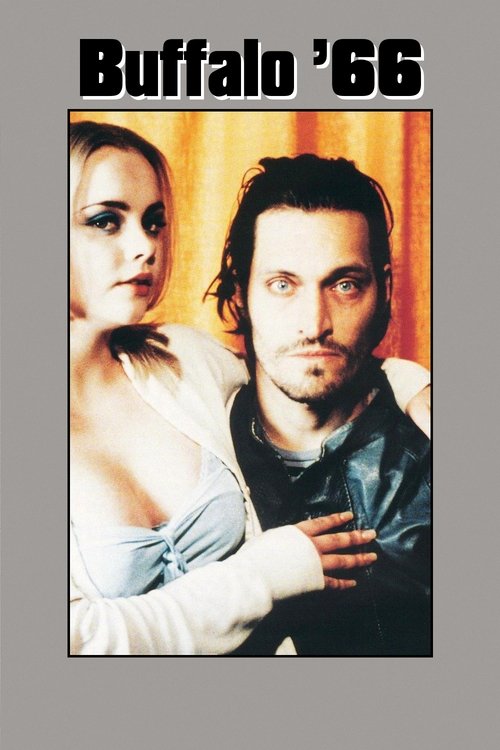
Title: Buffalo '66
Year: 1998
Director: Vincent Gallo
Writer: Alison Bagnall
Cast: Vincent Gallo (Billy Brown),
Christina Ricci (Layla),
Ben Gazzara (Jimmy Brown),
Anjelica Huston (Jan Brown),
Rosanna Arquette (Wendy Balsam),
Runtime: 110 min.
Synopsis: Billy is released after five years in prison. In the next moment, he kidnaps teenage student Layla and visits his parents with her, pretending she is his girlfriend and they will soon marry.
Rating: 7.133/10
The Fragile Dance of Desperation in Buffalo ’66
/10
Posted on July 15, 2025
Vincent Gallo’s Buffalo ’66 (1998) is a raw, idiosyncratic portrait of human fragility, where the bleakness of a snow-draped Buffalo, New York, becomes a canvas for emotional excavation. Gallo’s directorial debut, in which he also stars as the volatile Billy Brown, is a film that thrives on its contradictions part gritty character study, part tender fable. Its power lies in the interplay between Gallo’s jagged, improvisational screenplay and the haunting visual language crafted by cinematographer Lance Acord. The film’s muted, desaturated palette mirrors Billy’s inner desolation, a man fresh from prison, grappling with rejection and a desperate need for validation. Yet, it’s the unexpected warmth of Christina Ricci’s Layla, a tap dancer kidnapped into Billy’s chaotic orbit, that anchors the film’s heart. Ricci’s performance is a revelation her doe-eyed vulnerability and quiet resilience transform a potentially passive role into one of subtle agency, a counterpoint to Gallo’s manic intensity.
The screenplay, co-written by Gallo and Alison Bagnall, is both the film’s strength and its occasional stumbling block. Its stream-of-consciousness dialogue feels authentic, capturing Billy’s fractured psyche as he navigates a world that feels alien to him. However, the script’s indulgence in Billy’s self-pitying rants can feel repetitive, occasionally teetering on the edge of caricature. Gallo’s choice to lean into this rawness, though, is what makes the film distinctive its refusal to sanitize pain or offer easy redemption. The nonlinear storytelling, punctuated by jarring flashbacks to Billy’s abusive childhood, adds depth but can disrupt the narrative flow, leaving some emotional beats underexplored.
Acord’s cinematography is the film’s unsung hero, with its grainy 16mm texture and off-kilter framing evoking a sense of entrapment. The iconic bowling alley scene, where Layla’s tap dance unfolds in a surreal spotlight, is a masterstroke of visual storytelling her delicate movements a fleeting escape from Billy’s claustrophobic world. The soundtrack, featuring Gallo’s own melancholic compositions alongside King Crimson’s progressive rock, amplifies the film’s emotional dissonance, though its sparseness can leave some scenes feeling starkly unmoored.
Buffalo ’66 is not without flaws its pacing sags in the middle, and Gallo’s self-insertion as writer, director, and star risks narcissism. Yet, its raw honesty and refusal to conform make it a singular cinematic experience, a meditation on redemption that dares to linger in discomfort before offering a fragile glimpse of hope.
0
0
